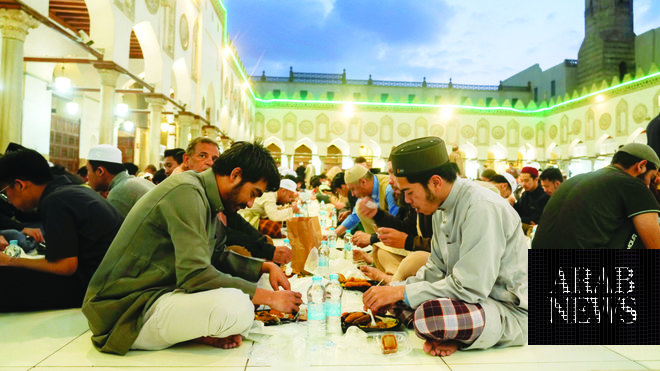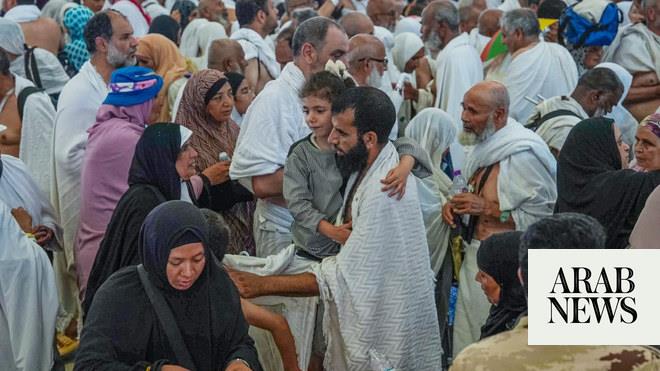
JEDDAH: Each country has a particular delicacy or a traditional staple Ramadan favorite food and beverage that is relished during iftar. After long hours of fasting and worshipping during the day, Muslims look forward to enjoying a hearty meal.
From fresh salads to nourishing soups, samosas to vegetable rolls, pastries to fatayer, there are many Ramadan delicacies to savor, which are an important part of a place and culture. For example, it’s not Ramadan in Palestine if fatoush salad and freekeh soup is not served during iftar.
Although most people enjoy binging on their Ramadan favorites, below are popular iftar dishes from around the world that are readily available in the Kingdom.
Haleem originates from an ancient Arabic dish known as harees and is said to have come to India via Afghanistan and Iran. It is a nutritious and popular dish among Indian, Pakistani and Bangladeshi communities. It comprises meat, soaked grains such as wheat and lentils, and it is cooked with spices for a few hours until it takes on a paste-like texture. The dish is smeared in butter and topped with ginger juliennes, fried onion, coriander and mint leaves, mint leaves, and a dash of lemon juice. HIGH LIGHTS
● Indonesia has diverse ethnic groups and cultural influences contributing to its cuisine. One of the most popular dishes during Ramadan is kolak. It is a brew of coconut milk mixed with palm sugar, pandanus leave and filled with slices of banana and sweet potatoes. The dish is very sweet — and a popular starter on Indonesian iftar tables.
● Malaysians prefer a plate of fragrant nasi lemak — fluffy white rice cooked in coconut milk and pandan leaves paired with a delicious batch of ayam goreng berempah, a crispy, spicy fried chicken — to break their fast.
During Ramadan, many Indian and Pakistani restaurants sell haleem with different variations of spice and consistency, with the taste varying from one place to another. If you are looking for the best place to have Hyderabadi haleem in Jeddah, try Shadab restaurant, Khana Khazana and Kings Palace — all located in Aziziyah district. In Riyadh, Shalimar restaurant and Charminar Hyderabadi restaurant are well-known for serving delicious haleem.
Another famous dish that people from the Indian subcontinent look forward to during Ramadan is pakoras or fritters. Pakoras are made from gram or chickpea flour batter spiced with Asian spices that can be used to coat anything from vegetables to chicken or meat and deep-fried till golden; they are best consumed hot with chutney and tomato sauce. Almost all the Indian, Pakistani and Bangladeshi restaurants serve this every day during Ramadan.
Another popular and common dish from the Indian subcontinent in Ramadan is dahi vada or dahi bhalla. The deep-fried fritters, made from gram or chickpea flour, are dunked into sweet and sour yoghurt and garnished with mint and tamarind sauces.
Rice is a central part of any meal in Indonesia and an iftar favorite during Ramadan. A rice-based meal comprises fried chicken, vegetable or meat curry or grilled fish.
Indonesia has diverse ethnic groups and cultural influences contributing to its cuisine. One of the most popular dishes during Ramadan is kolak. It is a brew of coconut milk mixed with palm sugar, pandanus leave and filled with slices of banana and sweet potatoes. The dish is very sweet — and a popular starter on Indonesian iftar tables.
In Indonesia, people love to break their fast with a sweet drink or food that is light on the stomach. Es Buah, a drink made of mixed fruits, ice cubes and syrup, is a popular choice to drink at iftar in Ramadan. Try traditional and authentic Indonesian cuisine at BoBoKo in north Obhur; Dendeng in Al-Naseem district, Jeddah; and Keraton restaurant in Riyadh’s Al-Fayha’a district.
Eritrean meals are classic and most of the dishes have dishes within them. Zigni is a traditional must-have during Ramadan. The zigni is a meat stew mixed with hot peppers, onion, garlic and oil and usually served with injera, which is a soft round pancake; some Eritreans prefer to eat zigni with rice. In Jeddah, Addis Ababa restaurant in Ar Rabwah district and Family restaurant in Al-Safa district serves the best zigni. In Riyadh, Musa restaurant in Sharafiyah offers flavorful Eritrean dishes.
For Malaysians, Ramadan is a month where they like to rekindle their gastronomical passion with loved ones. Quintessentially, Malaysians prefer a plate of fragrant nasi lemak — fluffy white rice cooked in coconut milk and pandan leaves paired with a delicious batch of ayam goreng berempah, a crispy, spicy fried chicken — to break their fast.
Other favorite Malay Ramadan dishes are roti john, an omelet sandwich filled with minced meat, green onion, egg, and tomato-chilli sauce usually prepared using a long loaf; and murtabak, which is spiced and stuffed with minced meat and vegetables in pan-friend bread with egg, and usually served with lentil curry and syrup-pickled onions.
The best place to taste Malaysian delicacies is D’Saji restaurant in Al-Rawdah district, Jeddah; Mutiara Malaysian Restaurant in Al-Muraba district, Riyadh; and Meezan restaurant in Al-Shamalia district, Alkhobar.
A hearty broth containing an assortment of local ingredients such as Japanese udon noodles, napa cabbage, negi (long green onion), Japanese tofu and thinly sliced beef is the most heart-warming Japanese dish to have during Ramadan.
Muslims in Japan prefer to eat healthy meals to celebrate nature’s feasts and end their meal by saying the word “gochisoosama,” which means honoring nature’s blessings.
Another signature Japanese dish is chicken katsu curry, a wholesome comfort food and a popular main dish. The katsu sauce is rich and creamy as it is slow cooked with herbs, spices, potatoes, carrots and broccoli and then laid on top of a bed of perfectly cooked Jasmine rice. The dish is finished with a generous portion of katsu-style fried chicken fillet.
This Ramadan, break your fast at the latest Japanese dining destination to eat the best authentic and traditional chicken katsu curry or the best wagyu beef dishes at Akiba Dori located in Ar Rawdah district, Jeddah, as well as at Riyadh Boulevard. Desert-lovers will have a hard time choosing between the taiyaki, matcha molten cake or hakata cheesecake. Japanese dishes have become popular and are increasingly finding their way to the iftar table of many.












